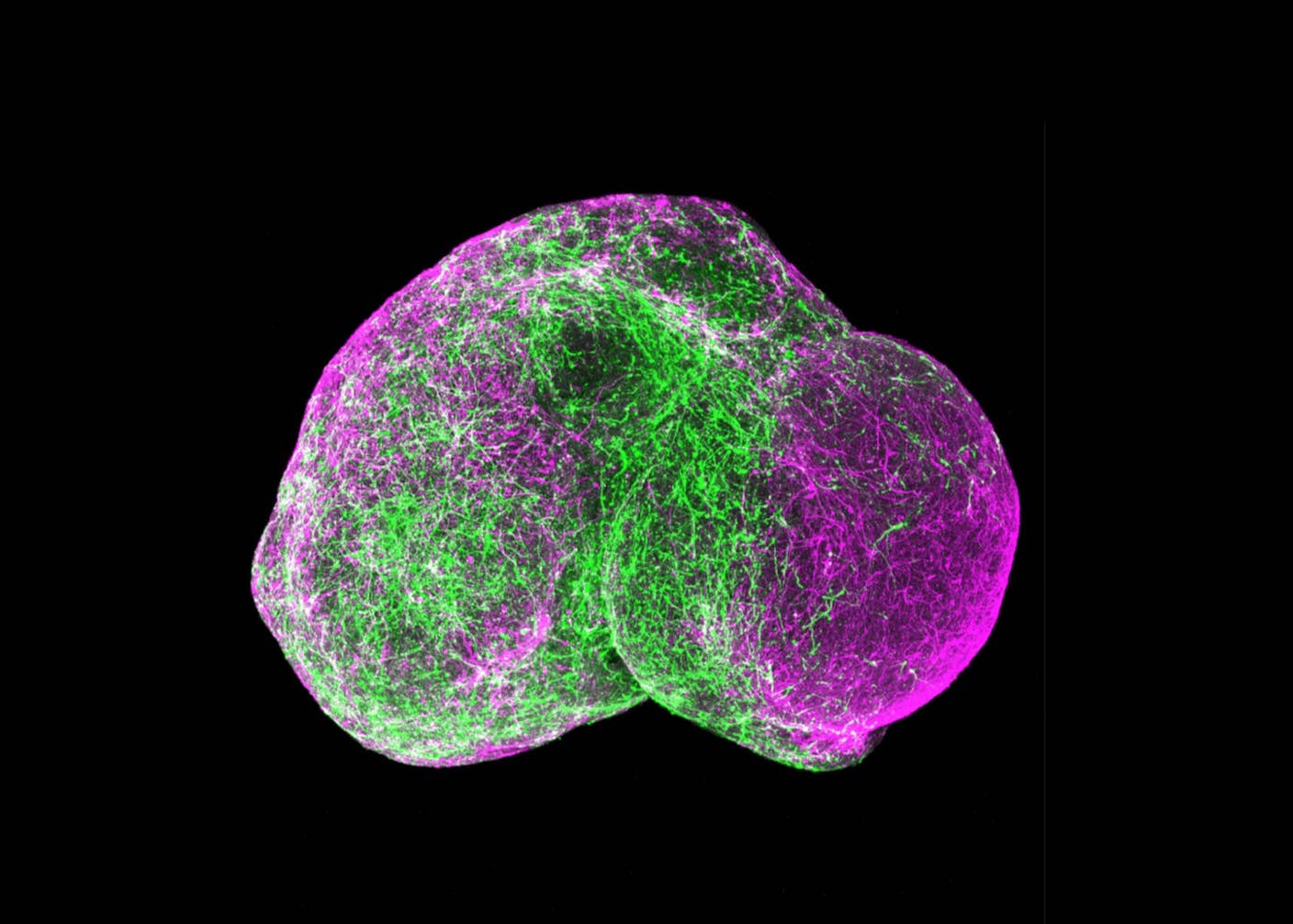Scientists Have Long Dreamed of a Memory Prosthesis. The First Human Trials Look Promising

Share
Memories are finicky. I’ve been touring Atlantic Canada for the past three weeks, and already my recollection of the trip—dates, places, foods, adventures—doesn’t match up with pins on Google Maps or journal entries. My brain was learning new experiences and encoding memories—just not strongly enough to last even a week.
Memory retention gets worse with age. For people with brain injuries, such as from a stroke or physical trauma to the brain, the impairment can be utterly debilitating. What if there was a way to artificially boost the brain’s ability to retain memories?
The idea sounds like a Black Mirror episode. But this month, a new study in Frontiers in Human Neuroscience provided some of the first evidence that a “memory prosthetic” is possible in humans. The prosthetic isn’t a device; rather, it’s a series of electrodes implanted inside the hippocampus—a structure buried deep within the brain that’s critical for episodic memories—that encodes the when, where, and what of our daily experiences.
The setup relies on an utterly unromantic view of memory. Rather than the waves of rich, detailed, emotional memories that flood our brains, it holds that memories are simply electrical signals generated by a well-regulated neural highway inside the hippocampus. If we can capture these signals while a person is learning, then in theory we could play the recordings back to the brain—in the form of electrical zaps—and potentially boost that particular memory.
The team built on their previous work of engineering memory prosthetics. In people with epilepsy, they showed that by re-introducing neural signals encoding one type of memory in a specific task, the zaps boosted recall by over 50 percent.
The study involved a small cohort. But incredibly, those who suffered from previous memory loss showed the best improvements.
To be clear, the team did not develop a video camera for memory. The system partially mimics the hippocampus’ normal process for memory encoding and recall, which can be notoriously subjective and somewhat unreliable. A similar memory prosthetic might not work well in the real world, where we’re constantly bombarded with new experiences and memories.
That said, the study shows a way to help people with dementia, Alzheimer’s, or other causes of memory loss retain snippets of their lives that could otherwise be lost.
“It’s a glimpse into the future of what we might be able to do to restore memory,” said Dr. Kim Shapiro at the University of Birmingham, who was not involved in the study, to MIT Technology Review.
How Does It Work?
It all comes down to the electrical pulses surrounding the hippocampus and within it.
Let’s zoom in. The hippocampus, a seahorse-shaped structure, is often described as a monolithic hub for memories. But—insert food analogy—rather than a uniform block of cheese, it’s more like a multi-layered cheese dip, with electrical pulses flowing through different layers as it encodes, retains, and recalls memories.
For the memory prosthetic, the team focused on two specific regions: CA1 and CA3, which form a highly interconnected neural circuit. Decades of work in rodents, primates, and humans have pointed to this neural highway as the crux for encoding memories.
The team members, led by Drs. Dong Song from the University of Southern California and Robert Hampson at Wake Forest School of Medicine, are no strangers to memory prosthetics. With “memory bioengineer” Dr. Theodore Berger—who’s worked on hijacking the CA3-CA1 circuit for memory improvement for over three decades—the dream team had their first success in humans in 2015.
The central idea is simple: replicate the hippocampus’ signals with a digital replacement. It’s no easy task. Unlike computer circuits, neural circuits are non-linear. This means that signals are often extremely noisy and overlap in time, which bolsters—or inhibits—neural signals. As Berger said at the time: “It’s a chaotic black box.”
To crack the memory code, the team worked out two algorithms. The first, called memory decoding model (MDM), takes an average of the electrical patterns across multiple people as they form memories. The other, called multi-input, multi-output (MIMO), is a tad more sophisticated, as it incorporates both input and output electrical patterns—that is, the CA3-CA1 circuit—and mimics those signals in both space and timing. In theory, pulsing both electrical signals based on MDM and MIMO back into the hippocampus should give it a boost.
In a series of experiments, first in rats and monkeys, then in healthy humans, the team found that their memory prosthetics could improve memory when neural circuits were temporarily disrupted, such as with drugs. But bypassing injured circuits isn’t enough—what they wanted was a true memory prosthetic that could replace the hippocampus if damaged.
Be Part of the Future
Sign up to receive top stories about groundbreaking technologies and visionary thinkers from SingularityHub.


A Whole New World
The new study benefited from a valuable neuroscience resource: people with epilepsy who have electrodes implanted into memory-related regions of their brains. The implants, deep inside the brain, help neurosurgeons track down the source of peoples’ seizures. Among the 25 participants selected, some did not exhibit symptoms other than epilepsy, whereas others had mild to moderate brain injuries.
Here’s the test. The participants were shown an image on a screen, then after a delay, they were shown the same image with up to seven different alternatives. Their goal was to pick out the familiar image. Each participant rapidly cycled through 100-150 trials, during which their hippocampal activity was recorded to capture their short-term memory.
After at least 15 minutes, the participants were shown 3 images and asked to rank the familiarity of each. It’s a tricky task: one was a sample image from the trial, another an alternative that seemed familiar, and one never previously seen. This was intended to capture their long-term memory.
Flash forward. One day between removing the electrodes, the participants underwent another round of memory tests similar to the ones before. Some people received electrical stimulation based on their own neural signals, processed by either the MDM or MIMO algorithm. Others were zapped with random pulses. The last group received no stimulation at all.
Overall, stimulating the brains of people with epilepsy boosted memory performance by roughly 15 percent. Those pulsed with MDM—which uses the averaged electrical signals—had a measly 13.8 percent boost. In contrast, the MIMO model, which mimics neural signals of each hippocampi, made their performance improve by 36 percent.
“Irrespective of baseline memory function (impaired vs. normal), the MIMO model produces at least double the facilitation compared to the MDM model,” the team said.
The Long Road Ahead
While promising, the study is just the next small step towards a hippocampal prosthetic. Because the participants had their electrodes removed following the second test, we don’t know whether—nor for how long—the effects lasted, or if continuous stimulation is necessary.
While a memory prosthetic could benefit people with Alzheimer’s, lots more details need to be ironed out. The electrode setup here is relatively crude—would a microarray or a non-invasive device be possible? If so, should the device be turned on 24/7? After all, we don’t remember all of our memories—there’s a sort of synaptic “purging” that’s thought to occur during sleep.
For now, the technology is far from being ready for clinical use. But it’s a glimpse of what could be. At the very least the study shows that, similar to a brain-controlled prosthetic limb, a memory chip isn’t impossible for people who need it the most.
Dr. Shelly Xuelai Fan is a neuroscientist-turned-science-writer. She's fascinated with research about the brain, AI, longevity, biotech, and especially their intersection. As a digital nomad, she enjoys exploring new cultures, local foods, and the great outdoors.
Related Articles

How Will the Universe End? The Dark Eternity That Awaits Us Trillions of Years From Now

Five-Year-Old Mini Brains Can Now Mimic a Kindergartener’s Neural Wiring. It’s Time to Talk Ethics.

Are Animals and AI Conscious? Scientists Devise New Theories for How to Test This
What we’re reading